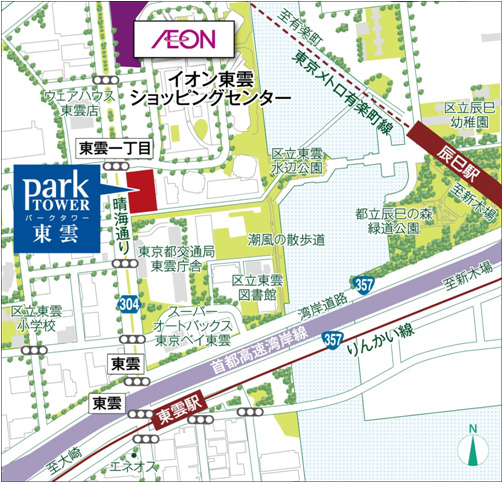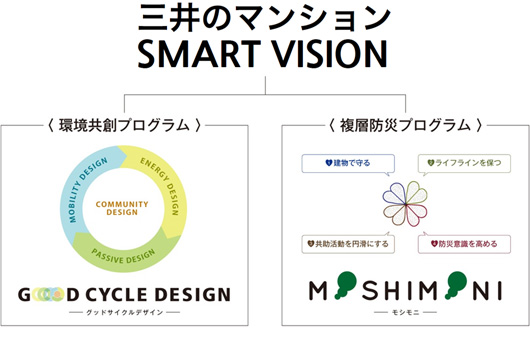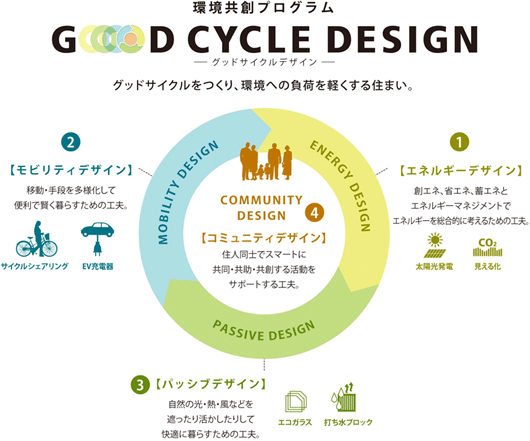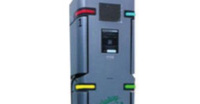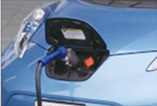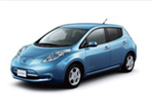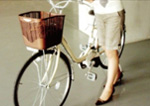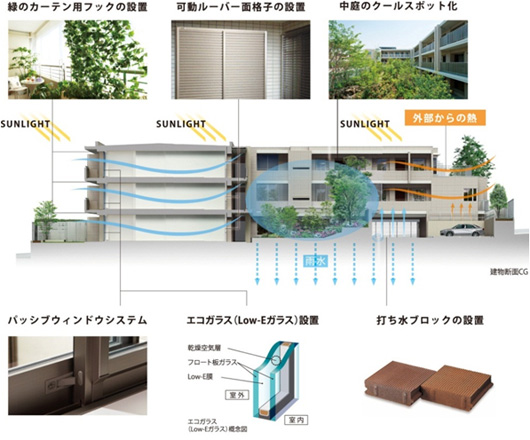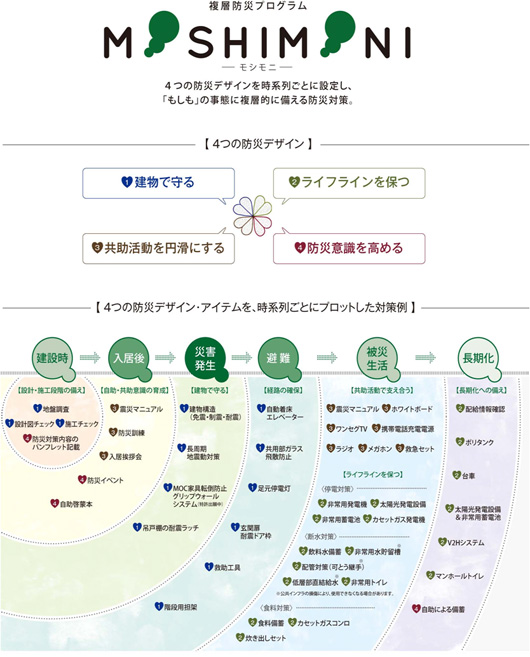With electric (EV) and plug-in hybrid (PHV) vehicles gaining widespread use, we will install EV chargers for use by condominium residents as standard. At Park Homes Todoroki Residence Square (all units sold), a single vehicle used in a car sharing program is logging approximately 1,000 kilometers per month. The bicycle sharing program is also enjoying frequent use. These accomplishments will form the basis for future efforts to further diversify and share modes of mobility. Mitsui Fudosan Residential will actively adopt a variety of options based on the characteristics of the specific property. These will include EV car sharing, bicycle sharing, rental car delivery on site, and V2H systems, which use car-sharing EVs to supply power to common-use areas during a power outage. (3) Passive design
|
||||||||||||||||||||||||||||||||||||||||||||||||||||||||||||||||||||||||||||||||||||||||||||||||
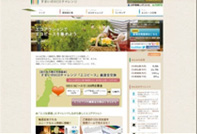 Environment community site ECO Challenge for Residences |
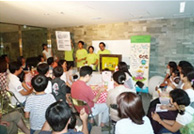 Move-in event |
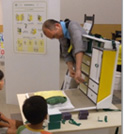 Disaster-readiness event |
Examples of Proposed Events
- Seasonal events: Christmas party, summer festival, Halloween party, rice cake pounding and other family events.
- Environmental events: Opportunities to enjoy nature, such as making name plates for trees and tree planting events, beautification activities, such as grounds cleanup and weeding.
- Disaster-readiness events: Events that children can also take part in and enjoy while learning, such as disaster readiness drills and briefings on AED use.
- Child raising support events: Storybook reading events to encourage interaction between those raising children, and crime prevention classes to help protect children from crime.
Items to Actively Adopt Based on Property Characteristics
Dedicated website for residents/creation of gathering places, such as multipurpose and household garden spaces
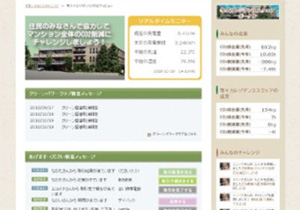
Dedicated website for residents
Mitsui Fudosan Residential supports collaborative, mutual support and joint creation activities that highlight the benefits of condominium life, and encourage both a sense of community and environmental consciousness among residents. After the 2011 earthquake and tsunami disaster, a Sustainable Community Research Committee was launched to work with experts on analyzing instances of properties that are “designed to improve with age.” This resulted in 143 indicators in the formation of good communities. In partnership with the Mitsui Fudosan Group, Mitsui Fudosan Residential plans to support community building in various ways. These will include instituting “Park Home Greeting” welcoming committees for new residents when new condominiums are completed, and proposing community measures to residents of existing properties.
Preparing for the Unexpected: the MOSHIMONI Multilayered Disaster-Readiness Program
Mitsui Fudosan Residential created “Good Cycle Design” in a drive to reduce the environmental impact of its condominiums. The concept consists of three core measures for structural aspects - energy design, mobility design and passive design - that set the stage for community design, or the promotion of community activities. Utilizing and revitalizing properties and facilities through community use and activities, creates a good cycle for transitioning to sustainable lifestyles with minimal environmental impact.
Multilayered Disaster-Readiness Program/4 Designs
(1) Protect at the Building Level
Ensure a quake-resistant structure and secure escape routes to protect residents
Items to Actively Adopt Based on Property Characteristics
Condominium Earthquake-Readiness System (Emergency Earthquake Alerts), others
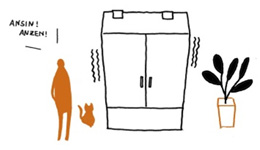 MOC Grip Wall System” to Prevent Toppling Furniture |
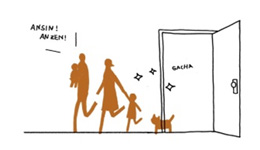 Earthquake-resistant front doorframes |
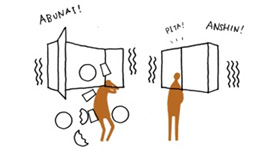 Earthquake-proof latches for suspended storage units |
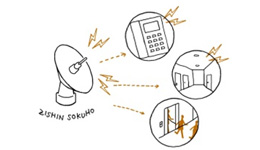 Condominium Earthquake-Readiness System (Emergency Earthquake Alerts) |
(2) Ensure Lifelines
Support people living in disaster situations through initiatives to maintain lifelines
Standard Items for All Condominiums
Increase emergency generator fuel stores, and install solar power generation systems and emergency storage batteries/emergency water storage tanks/direct supply of water to lower levels of building/stockpile of emergency drinking water
Items to Actively Adopt Based on Property Characteristics
Portable toilets/portable generators fueled with butane gas canisters/ flexible joints for lifeline water and wastewater pipes/V2H systems (use EVs during power outages)/use of rainwater/stockpiling of emergency food supplies/emergency cooking sets
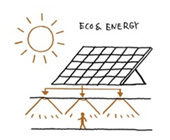 Solar power generation systems |
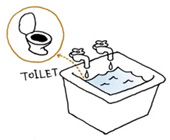 Emergency water storage tanks |
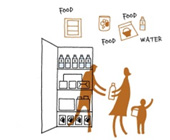 Emergency drinking water and food |
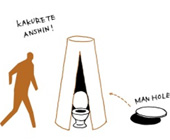 Portable toilets |
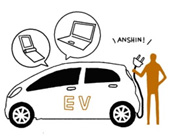 V2H systems |
To cope with power outages, Mitsui Fudosan Residential is storing more fuel for emergency generators, adopting solar power generation systems and emergency storage batteries as standard, and installing generators that operate on butane gas canisters. To deal with interruptions in water service, along with stockpiling drinking water, emergency water storage tanks are being installed for toilets and other non-potable water uses. In addition, flexible joints are being used for lifeline water and wastewater pipes, affording greater flexibility to minimize pipe damage caused by ground shifts.
(3) Facilitate mutual support activities
Various measures that smoothly encourage mutual support activities by leveraging the benefits of condominium living
Standard Items for All Condominiums
Stockpile emergency supplies/various emergency equipment (rescue gear, One-Seg TV, megaphones, whiteboards and others depending on property scale)/Park Home Greeting welcoming committee for new residents/disaster response manuals/disaster-readiness drills, others
Items to Actively Adopt Based on Property Characteristics
Communication equipment for common-use areas, others
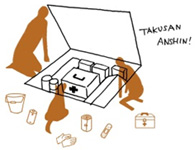 Stockpiling of emergency supplies/various emergency equipment |
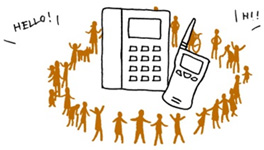 Communication equipment for common-use areas |
Getting life back on track after a major disaster will require not only individual self-help, but mutual support efforts built on cooperation between condominium residents and the surrounding community. Condominiums offer a number of benefits in this regard, including rescue activities, first aid, efforts to ensure subsistence, and information gathering and sharing. To leverage these merits and ensure that mutual support activities happen smoothly, Mitsui Fudosan Residential offers a variety of support, from the stockpiling of essential emergency supplies, preparation of disaster response manuals and disaster-readiness drills, to disaster-readiness events to raise disaster awareness and encouraging community building.
(4) Raise Disaster Awareness
Various measures, such as sponsoring of disaster-readiness events, to support efforts to raise disaster awareness among residents
Standard Items for All Condominiums
Distribution of book of tips on surviving earthquakes/ proposal of disaster-readiness events
Items to Actively Adopt Based on Property Characteristics
Sponsorship of Disaster-Readiness Events Supervised by Disaster-Readiness Director NPO +arts
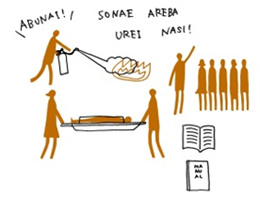
Disaster-readiness events/drills
Individual disaster awareness is invaluable when disaster strikes. By sponsoring disaster-readiness events and distributing related tools, Mitsui Fudosan Residential provides everyday support for raising disaster awareness. Specifically, the company distributes books on disaster awareness covering topics such as taking steps to prevent furniture from toppling, stockpiling of food, water and emergency toilets, verifying options for contacting family members, and verifying evacuation centers.
Amassing Expertise for More Than a Decade to Accelerate Post-Disaster Efforts
“Designed to improve with age” is Mitsui Fudosan Residential's business philosophy. The idea behind it is that the new towns that emerge from this business should increase in value over time, with the aim of creating towns to proudly pass on to future generations. As concrete measures in this regard, Mitsui Fudosan Residential has enacted a host of initiatives over the years that are the source of its SMART VISION today. What people expect from a condominium in terms of both the building itself and the systems relating to it has changed dramatically since the Great East Japan Earthquake in 2011. While remaining firmly rooted in the philosophy, “designed to improve with age,” Mitsui Fudosan Residential has developed a number of model projects in response to issues such as reducing environment impact and enhancing safety and security. Today, the knowhow gained from this work is embodied in the SMART VISION for Mitsui Condominiums, and is now becoming standard at all the condominiums we develop.
Examples of Joint Environment Creation Initiatives
| 2000 | Formulation of “Eco Standards” for condominiums consisting of environmental performance and specifications for reducing CO2 emissions over the entire property lifecycle. |
|---|---|
| 2008 | Received the Good Design Award for eco initiatives at Park Homes and other Mitsui Fudosan Residential condominiums. |
| 2010 | Began operating ECO Challenge for Residences, an environmental community website. |
| 2011 | Park Homes Todoroki Residence Square (all units sold), which incorporates energy, passive, mobility and community design elements, was selected as a model project promoting housing and buildings with a smaller carbon footprint by Japan's Ministry of Land, Infrastructure, Transport and Tourism. |
Model Project Properties and Key Achievements
 |
Park City Kashiwa-no-ha Campus Nibangai District (total number of units: 880/Kashiwa City, Chiba)
|
 |
Park City Kokubunji (total number of units: 331/Kokubunji City, Tokyo)
|
 |
Park Homes Okurayama (total number of units: 177/Kohoku-ku, Yokohama City, Kanagawa)
|
 |
Park City Minamiurawa (total number of units: 211/Minami-ku, Saitama City, Saitama)
|
 |
Park City Musashikosugi The Grand Wing Tower (total number of units: 506/Nakahara-ku, Kawasaki City, Kanagawa)
|
 |
Park Tower Nishi-Shinjuku Emsport (total number of units: 179/Shinjuku-ku, Tokyo)
|
 |
Park Tower Shinonome (total number of units: 585/Koto-ku, Tokyo)
|
Advance showings of Park Tower Shinonome, a model project embodying the Mitsui SMART VISION, are scheduled to begin from mid-September.
For the Fine Court series of detached home products from Mitsui Fudosan Residential, we are examining options for setting environmental criteria uniquely suited to detached homes. These include passive design and the introduction of basic environmental technologies making energy creation and storage possible, such as ENE-FARM and residential storage batteries. We have also begun distributing to homeowners a book filled with useful information on preparing for the unexpected.
Guided by our corporate statement, "Creating the Homes and Lifestyles of the Future," we at Mitsui Fudosan Residential are dedicated to providing high-quality housing and proposing new styles of living.
Visit the SMART VISION website at: http://www.31sumai.com/smart/
"![]() " xpresses the Group policy that all its activities should always be in harmony with the Earth. This policy is based on the Mitsui corporate philosophy of coexisting in harmony with society, symbolized by the Mitsui Fudosan Group logo. The Mitsui Fudosan Residential Group is united in a commitment to work together with customers to create new towns that will lead to a happier and more prosperous future.
" xpresses the Group policy that all its activities should always be in harmony with the Earth. This policy is based on the Mitsui corporate philosophy of coexisting in harmony with society, symbolized by the Mitsui Fudosan Group logo. The Mitsui Fudosan Residential Group is united in a commitment to work together with customers to create new towns that will lead to a happier and more prosperous future.
"![]() " logo represents an inclusive approach toward harmonious coexistence that transcends conflicting ideals in the process of creating new value. This contrasts with the notion of "or," in which society must often choose between perceived opposing perspectives, such as "civilization or nature," "economy or culture," "work or study." The logo was adopted in April 1991.
" logo represents an inclusive approach toward harmonious coexistence that transcends conflicting ideals in the process of creating new value. This contrasts with the notion of "or," in which society must often choose between perceived opposing perspectives, such as "civilization or nature," "economy or culture," "work or study." The logo was adopted in April 1991.
* The key specific measures for design features stipulated above, even if included as part of a list of standard items, may not be adopted in certain cases depending on the specific property characteristics (scale, shape, location, facilities composition, etc.), guidance from authorities, or for other reasons not stated. Solar power generation systems and emergency storage batteries will be adopted at properties that do not have emergency generators onsite. The standard items for disaster-readiness design features conform to the strengthened disaster-readiness standards released by Mitsui Fudosan Residential on December 15, 2011.
Park Tower Shinonome Property Overview
| Location | 1-6, Shinonome 1-chome, Koto-ku, Tokyo (lot number) | 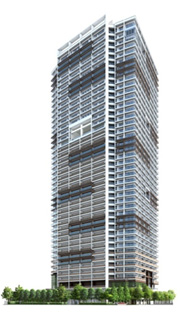 Exterior view (conceptual drawing) |
|---|---|---|
| Access | Tokyo Waterfront Area Rapid Transit Shinonome Station (7 minutes on foot) Tokyo Metro Yurakucho Line Tatsumi Station (10 minutes on foot) Tokyo Metro Yurakucho Line Toyosu Station (16 minutes on foot) |
|
| Developer | Mitsui Fudosan Residential Co., Ltd. | |
| Site area | 7,541.44 m2 (81,175.4 ft2) | |
| Gross floor area | 61,418.26 m2 (661,101.0 ft2) | |
| Structure | Reinforced concrete, 43 floors above ground | |
| Total number of units | 585 | |
| Total exclusive floor area | 55.37 m2 to 90.35 m | |
| Layouts | 2LDK to 4LDK | |
| Parking lots | 325 spaces | |
| Design architect | SHIMIZU CORPORATION | |
| Contractor | SHIMIZU CORPORATION | |
| Property manager | Mitsui Fudosan Housing Service Co., Ltd. | |
| Schedule | Start of construction: July 2011 Completion: Mid-January 2014 (planned) Move-in: April 2014 (planned) |
|
| Start of sales | Late October 2012 (planned) | |
| Official website | http://www.31shinonome.com/(Japanese only) |
Map
